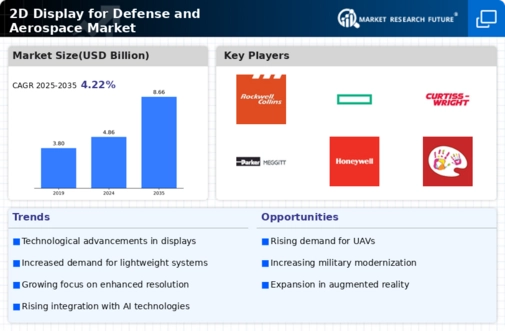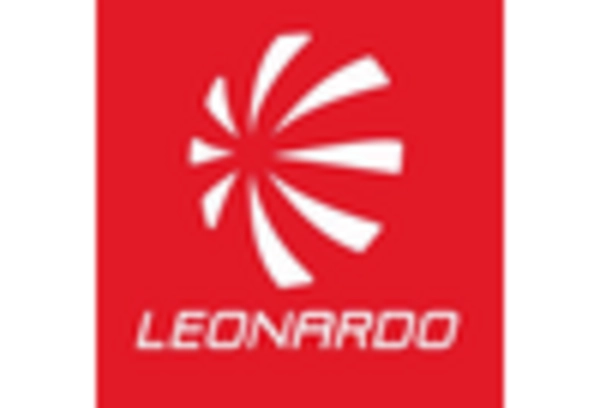Emphasis on User-Centric Design
The 2D Display for Defense and Aerospace Market is increasingly emphasizing user-centric design principles. As operators in defense and aerospace environments require intuitive interfaces for effective interaction with complex systems, manufacturers are focusing on creating displays that enhance usability. This trend is reflected in the development of customizable display solutions that cater to specific operational needs. The market is expected to see a rise in demand for displays that incorporate user feedback and ergonomic considerations, potentially leading to a market growth rate of around 4% annually. By prioritizing user experience, the industry aims to improve operational efficiency and reduce training time for personnel.
Increased Demand for Enhanced Visualization
The need for enhanced visualization in the 2D Display for Defense and Aerospace Market is becoming increasingly pronounced. As military operations and aerospace missions become more complex, the requirement for high-resolution displays that can present detailed information in real-time is paramount. This demand is reflected in the growing investments in advanced display systems, which are expected to reach a market value of approximately $3 billion by 2026. Enhanced visualization capabilities not only improve operational efficiency but also contribute to mission success, thereby propelling the market forward. The integration of augmented reality and advanced graphics in 2D displays further supports this trend.
Technological Advancements in Display Technology
The 2D Display for Defense and Aerospace Market is experiencing rapid technological advancements that enhance display capabilities. Innovations such as OLED and microLED technologies are being integrated into military and aerospace applications, providing superior image quality and energy efficiency. These advancements allow for better situational awareness and improved decision-making in critical scenarios. The market for advanced display technologies is projected to grow significantly, with estimates suggesting a compound annual growth rate of over 5% in the coming years. As defense and aerospace sectors increasingly adopt these technologies, the demand for high-performance 2D displays is likely to rise, driving market growth.
Growing Focus on Lightweight and Compact Solutions
The 2D Display for Defense and Aerospace Market is witnessing a growing focus on lightweight and compact display solutions. As defense and aerospace applications often require portable and space-efficient equipment, manufacturers are innovating to produce displays that meet these criteria. The trend towards miniaturization is driven by the need for mobile command centers and aircraft that can operate in diverse environments. Reports indicate that the lightweight display segment is expected to grow at a rate of 6% annually, reflecting the industry's shift towards more efficient and versatile display technologies. This focus on compact solutions is likely to enhance the overall functionality of defense and aerospace systems.
Rising Investment in Defense and Aerospace Sectors
The 2D Display for Defense and Aerospace Market is benefiting from rising investments in defense and aerospace sectors. Governments and private entities are allocating substantial budgets to modernize their military capabilities and enhance aerospace technologies. This trend is evident in various defense procurement programs that prioritize advanced display systems for aircraft, naval vessels, and ground vehicles. The market is projected to see an influx of funding, with estimates suggesting an increase of over 10% in defense spending in the next few years. Such investments are likely to drive demand for sophisticated 2D displays, as they are integral to modern defense and aerospace operations.

















Leave a Comment